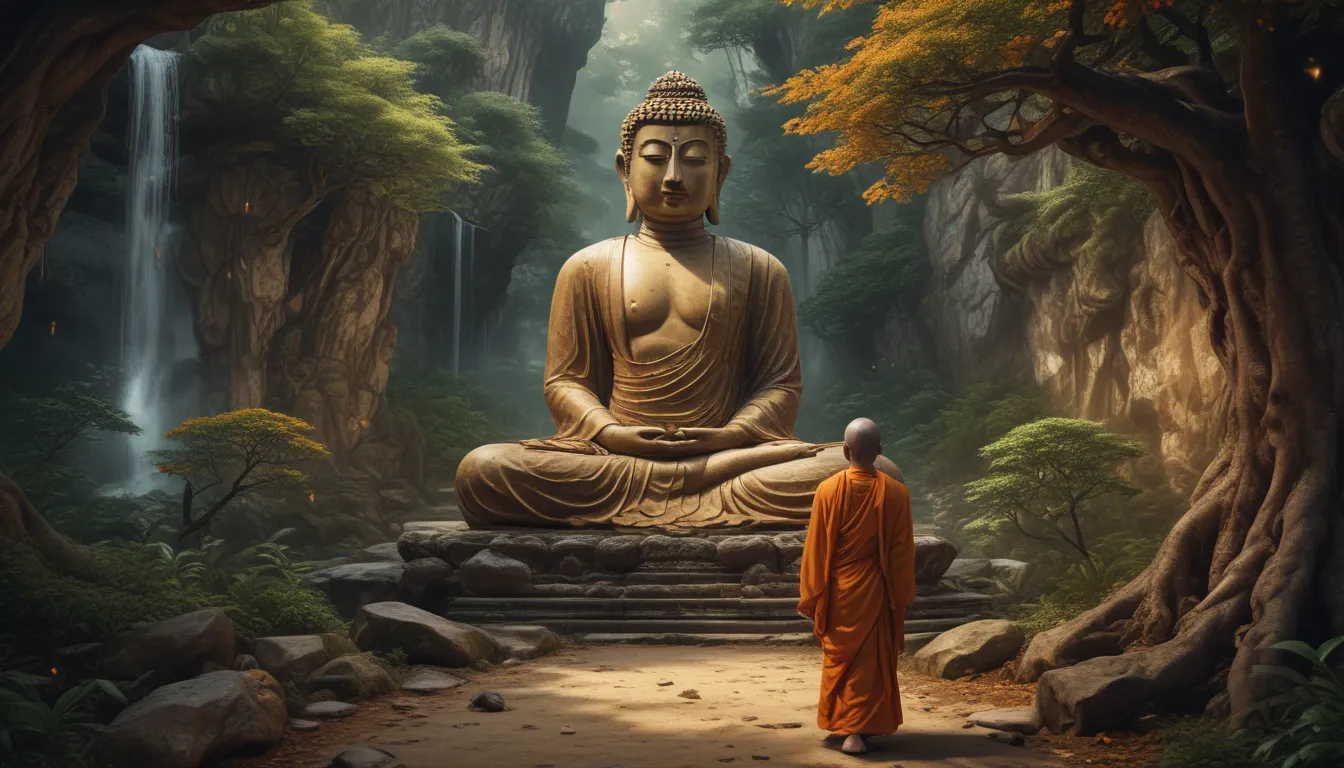The images in our articles may not match the content exactly. They are used to grab your attention, not to show the exact details in the text. The images complement the text but do not replace it.
Welcome to a journey of spiritual discovery, where ancient wisdom and profound teachings await you. Embarking on a Buddhist pilgrimage is more than just a physical journey; it’s an exploration into the heart of spirituality and enlightenment. These sacred sites hold the essence of Buddhism, offering a unique blend of spiritual awakening, cultural immersion, and historical insights. Whether you’re a devout follower or a curious traveler, the 15 fascinating facts about Buddhist pilgrimage sites will enrich your journey and perhaps lead you closer to finding your own path to enlightenment.
Unveiling the Essence of Buddhist Pilgrimage
Embarking on a Buddhist pilgrimage means stepping into a realm of sacred spaces rich with history and significance. These spiritual journeys to places considered holy in Buddhism offer pilgrims a chance to meditate, pray, and pay homage to the teachings of the Buddha. Let’s explore the essence of Buddhist pilgrimage through some key facts:
-
Lumbini: The birthplace of Siddhartha Gautama, the Buddha, located in modern-day Nepal, is a revered pilgrimage site.
-
Bodh Gaya: Where Buddha attained enlightenment under the Bodhi Tree in India, now home to the majestic Mahabodhi Temple.
-
Sarnath: The site near Varanasi in India where Buddha delivered his first sermon, igniting the Wheel of Dharma.
-
Kushinagar: The place in India where Buddha passed away into Nirvana, a quiet spot for reflection for many pilgrims.
Exploring the Key Sites on the Buddhist Pilgrimage Circuit
Beyond the principal sites of Buddhist pilgrimage, there are several other locations of immense significance that form a wider circuit of spiritual exploration:
-
Sravasti: Where Buddha spent 24 rainy seasons, imparting numerous teachings and sermons.
-
Rajgir: Known for the Vulture Peak, where Buddha preached several important sutras.
-
Ajanta and Ellora Caves: Renowned for their stunning Buddhist art and sculptures in Maharashtra, India.
-
Mount Kailash: Considered sacred in various religions, including Buddhism, Hinduism, Jainism, and Bon, symbolizing the axis of the world and a site for circumambulation.
Understanding the Importance of Buddhist Pilgrimage
Pilgrimage in Buddhism holds deep spiritual significance, offering pilgrims opportunities for merit, faith deepening, and a profound connection with the teachings of the Buddha. Let’s delve into the multiple purposes that pilgrimage serves in the Buddhist tradition:
-
Acts of Devotion: Pilgrimages are viewed as acts of devotion that help purify the mind from defilements and negative karma.
-
Reflection on Teachings: They provide a moment for reflection on the teachings of the Buddha, fostering a deeper understanding and commitment to the Buddhist path.
Navigating the Modern Challenges of Buddhist Pilgrimages
In the contemporary world, Buddhist pilgrimages have adapted to modern transportation, making these sacred sites more accessible to a global audience. However, along with this accessibility come challenges that need to be addressed:
-
Environmental Degradation: Increased footfall at pilgrimage sites poses a threat to the ecological balance of these sacred places.
-
Commercialization: The commercialization of pilgrimage sites raises concerns about maintaining their sanctity.
Efforts are underway to preserve the sanctity and ecological balance of these sites through sustainable tourism practices.
Embracing Technology in the Pursuit of Spiritual Growth
Technology has revolutionized the way pilgrimages are undertaken today, with virtual pilgrimages gaining popularity:
-
Virtual Tours: Websites and mobile apps offer virtual tours of sacred sites, making the spiritual benefits of pilgrimage accessible to a broader audience.
-
Digital Accessibility: This digital approach has made the teachings and locations associated with Buddhism more accessible to people worldwide.
-
Debates and Discussions: While virtual pilgrimages offer convenience, some argue that the transformative experience of physically visiting a sacred site cannot be fully replicated in a virtual setting.
In a blend of tradition and modernity, Buddhist pilgrimages continue to evolve, offering paths to spiritual growth and enlightenment for individuals seeking a deeper connection.
Nurturing Your Inner Journey through Buddhist Pilgrimage
As we conclude our exploration into the realm of Buddhist pilgrimage, remember that these spiritual journeys are not just about visiting temples but about inner reflection, understanding Buddhism, and connecting with a community of seekers. Each site on the pilgrimage circuit offers a unique path to enlightenment and peace. It’s the journey itself, not just the destination, that enlightens. Approach each step with mindfulness and openness, and you’ll uncover insights into Buddhism and your own spiritual journey. So, pack your bags with curiosity and respect, for the path of Buddhist pilgrimage is a thousand insights, each step a story, each temple a lesson in the art of living.
Your Contribution Counts
The commitment to providing trustworthy and engaging content underpins our work. Each fact on our site is contributed by real users like you, bringing a wealth of diverse insights and information. Rest assured that our dedicated editors meticulously review every submission to ensure the highest standards of accuracy and reliability. Explore, learn, and trust in our commitment to quality and authenticity as you navigate the world of Buddhist pilgrimage.






